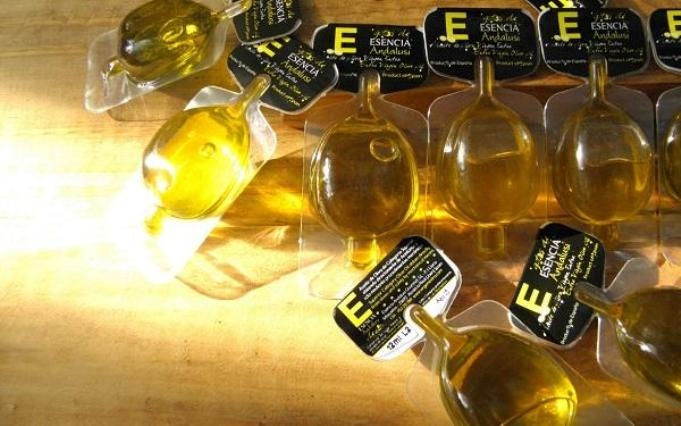Dec 24 2018
A unique sensor that is capable of detecting fake olive oils labeled as a protected designation of origin or extra virgin has been developed by researchers at the Complutense University of Madrid (UCM) and the Scintillon Institute in the United States.
 The sensor can distinguish between apparently similar oils. (Image credit: Esencia Andalusí)
The sensor can distinguish between apparently similar oils. (Image credit: Esencia Andalusí)
Reported in Talanta, the innovative tool can differentiate between evidently analogous oils that denote prominent variations in quality. This is realized with the help of laser diodes because the fluorescence produced by adulterated oils is somewhat different than the fluorescence emitted by pure, extra virgin olive oils. The new tool is affordable enough to use as well as to produce with a 3D printer.
Other clear advantages of our tool include the possibility of conducting on-site analyses, because the equipment is the size of a briefcase and therefore portable, and of generating results in real time.
José S. Torrecilla, Researcher and Senior Lecturer, Department of Chemical and Materials Engineering, UCM.
To the olive oil industry, the tool provides a means to address an issue that results in massive economic losses. “The quality of olive oil is recognised nationally and internationally. It is therefore necessary to protect this quality and combat the fraudulent activities carried out with increasing frequency and skill in the sector,” continued the UCM researcher.
Adulterating fresh and pure virgin olive oil with cheaper and inferior olive oil or even oils of another botanical origin is one instance of fake practice, noted Torrecilla.
Analysis using chaotic algorithms
To perform the study, single-varietal, protected designation of origin oils were mixed with other protected designation of origin oils that exceeded their “best before” date. For this study, all the oils were bought from shopping center stores.
The mixtures were then made using oils whose acidity ranged between 1% and 17% and also exceeded their “best before” date. Finally, with the help of the sensor developed with a 3D printer, measurements were made and the results achieved through chaotic algorithms were analyzed.
“This technique is available for use at any time, and only requires oils prior to packaging for quality control or after packaging to detect fraudulent brands and/or producers,” the UCM researcher concluded.